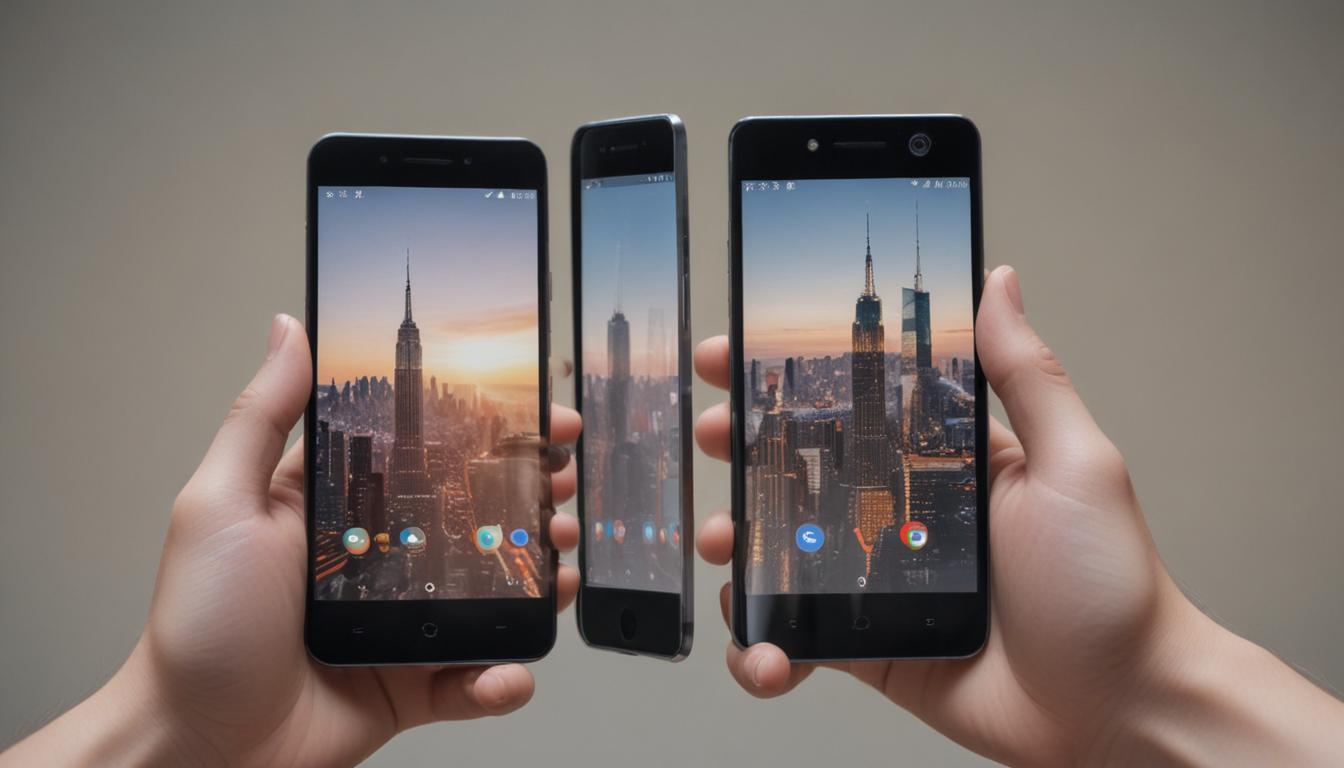Now Reading: What’s Next for Smartphones?
- 01
What’s Next for Smartphones?
What’s Next for Smartphones?

The Evolution of Smartphones What Comes Next?
Does your new phone feel… familiar? You’re not alone. For years, the thrill of a new smartphone has been slowly replaced by a sense of incremental change. The bezels get a little thinner, the camera gets a few more megapixels, and the processor gets a bit faster. But the fundamental experience of using a black glass rectangle has remained largely the same. This has left many of us wondering if smartphone innovation has hit a wall. Is this as good as it gets?
The good news is that the era of stagnation is ending. While the changes might not be as obvious as the jump from a flip phone to the first iPhone, a profound evolution is happening right now. The future of the smartphone is being built not just with better screens and faster chips, but with new shapes, groundbreaking artificial intelligence, and a vision that extends far beyond the device in your pocket. This guide will walk you through the exciting frontiers of mobile technology and reveal what truly comes next.
From Glass Slabs to Foldable Frontiers
For over a decade, the smartphone has been defined by a single, monolithic design. This “glass slab” form factor, popularized by the original iPhone, has served us incredibly well. It perfected the touch interface and created a universal canvas for the millions of apps that define our digital lives. It’s a design so successful and ubiquitous that it became difficult to imagine anything else taking its place. But its limitations are becoming more apparent as our needs change. We want bigger screens for media and multitasking, but smaller devices to carry around.
This is where foldable technology is creating the first major crack in the monolith. Devices like the Samsung Galaxy Fold and Google Pixel Fold are no longer niche experiments; they are mature products proving that a phone can be both a compact device and a small tablet. This shift in form factor fundamentally changes how we interact with our most personal computer, allowing for more immersive video, more productive multitasking, and new app experiences. As the technology becomes more durable and affordable, we can expect to see even more radical designs emerge, including rollable screens that expand on demand and perhaps even transparent displays that blend technology with the world around us.
The Invisible Revolution AI and Connectivity
While foldable screens provide a visible, physical evolution, the most powerful changes are happening under the hood. The buzzword “AI” has been attached to phone marketing for years, often referring to simple photo processing. However, the next wave of artificial intelligence is far more integrated and transformative. True on-device AI, powered by sophisticated chips like Apple’s Neural Engine and Google’s Tensor processors, allows your phone to perform complex tasks without needing to send your data to the cloud. This means faster, more private, and more personal experiences.
Imagine your phone not just transcribing your voice notes, but summarizing them and creating a to-do list automatically. Picture a live conversation with someone in another language, with real-time translation appearing on your screen or spoken in your ear. This is the power of on-device AI. It will make our phones true proactive assistants that understand context and anticipate our needs. This intelligence is supercharged by advancements in connectivity. 5G and the upcoming 6G networks are not just about faster downloads; they provide the low-latency, high-bandwidth foundation for a world where our phones are the central hub for countless other smart devices, from our watches and earbuds to our cars and homes.

Beyond the Phone The Age of Ambient Computing
Perhaps the most radical idea is that the next evolution of the smartphone might not be a phone at all. We are entering the age of ambient computing, where the functions of your phone are broken apart and distributed into a network of specialized, interconnected devices. The smartphone will remain the central “brain” and hub for your digital identity, but the way you interact with it will become more seamless and less intrusive.
Think of devices like smart glasses that can overlay directions onto your field of view or provide instant information about what you’re looking at. Consider AI-powered pins and pendants that can handle calls, answer questions, and take notes without you ever needing to pull a screen out of your pocket. These are not phone replacements; they are extensions of the phone’s power, designed for specific contexts. The future is an ecosystem where technology fades into the background. You won’t think about “using your phone” so much as simply accessing information and services wherever you are, through the most convenient interface for that moment. The black rectangle in your pocket isn’t disappearing, but its monopoly on our digital lives is about to end.





































